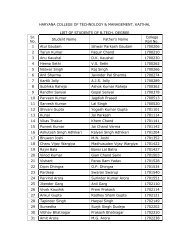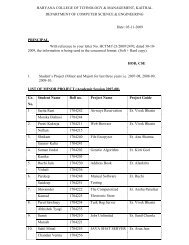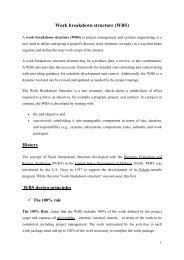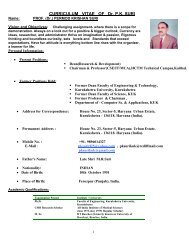Create successful ePaper yourself
Turn your PDF publications into a flip-book with our unique Google optimized e-Paper software.
LECTURE NOTES OF ADVANCED DATA STRUCTURE (MT-CSE 110)<br />
TREES<br />
Binary tree: A binary tree consists of a finite set of elements that can be<br />
partitioned into three distinct sub‐ sets called the root, the left and the right<br />
sub‐tree.If there are no elements in the binary tree ,it is known as empty binary<br />
tree.A binary tree ‘T’ is either empty or has a finite collections of<br />
elements.When the binary tree is not empty,one of its elements is called the<br />
root and the remaining elements,if any,are partitioned into two binary<br />
trees,which are known as left & right sub tree of T.<br />
The essential difference between a binary tree and a tree are<br />
A binary tree can be empty whereas a tree cannot.Each element in binary tree<br />
has at most two sub‐trees(one or both of these sub‐tree may be empty).Each<br />
element in a tree can have any number of sub‐trees.<br />
The sub‐trees of each element in a binary tree are ordered.That is,we<br />
distinguish between the left and right sub tree.The sub tree in a tree are<br />
unordered.<br />
Here are some of the binary trees that represents arithmetic expressions.Each<br />
operator(+, ‐, *, /) may have one or two operands.The left operand ,if any,is the<br />
left sub‐tree of the operator & the right operand is the right<br />
sub tree.The leaf elements in an expression tree are either constants or<br />
variables.<br />
Prepared By :<br />
Er. Harvinder Singh<br />
Assist Prof., CSE, H.C.T.M (Kaithal) Page ‐ 176 ‐







